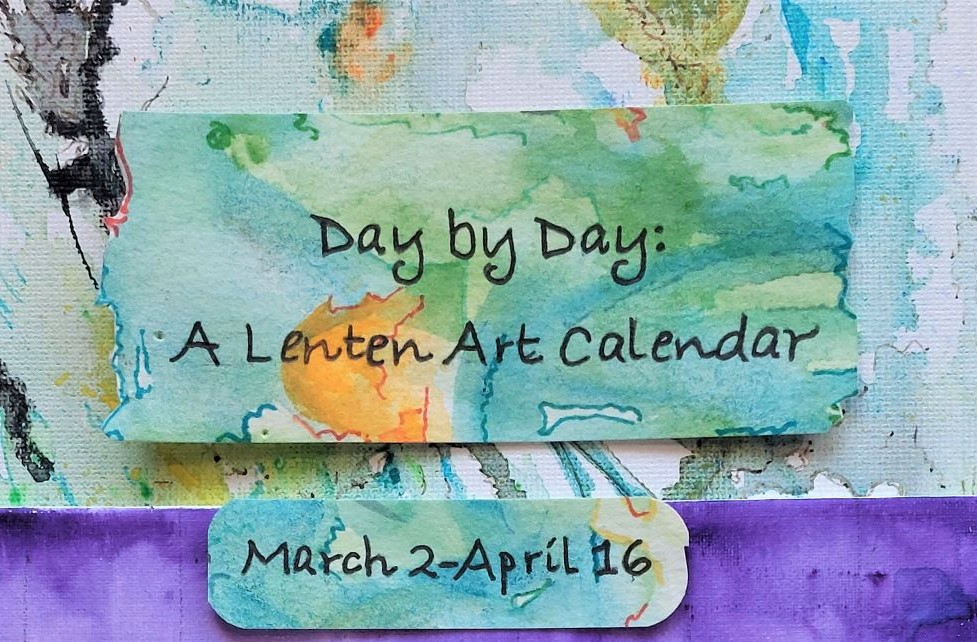
Fill in the Blank
I will write each day about some aspect of Holy week, according to the Scriptural references that record Jesus’ last days on earth. I will not interpret Jesus’s thoughts and action but will instead take the point of view of an observer to these singular events, puzzling, wondering and discovering insights that may illuminate our own walk through Holy Week.
Today’s scripture is Mark 14: 3, 10
3 While he was in Bethany, reclining at the table in the home of a man known as Simon the Leper a woman came with an alabaster jar of very expensive perfume, made of pure nard. She broke the jar and poured the perfume on his head.
10 Then Judas Iscariot, one of the Twelve, went to the chief priests to betray Jesus to them. They were delighted to hear this and promised to give him money. So he [Judas] watched for an opportunity to hand him [Jesus] over.
Writing tests for college students was not my favorite occupation. As instructors, we had to newly create tests each semester to guard against students’ sharing tests from semester to semester. That was likely to happen in our small university with its tightly knit cohorts of students. I had to look at the same material in new ways, and figure out how to ask similar questions with a creative twist. As mid-terms or finals approached, I asked my students what kinds of questions they preferred, and –no surprise– essay questions were the least popular. They almost always suggested one kind of question that I detested: Fill in the Blank. Fill in the Blank questions, unlike multiple choice or even the dreaded essay questions, seem to be simple. I learned the hard way after one semester that the ways that my brain worked and the correct answers I expected seldom matched the ways students’ minds did. What was an obvious answer to me was often a mystery to them. Fill in the Blank questions were a guessing game, rather than a true mastery of course knowledge. What phrase fita best in those mysterious spaces? What is the exact word that will get things right?
It is not just college professors and students who struggle with filling in the blank. In studying about Holy Week, Wednesday remains, despite generations of scholars and hundreds of interpretations, somewhat of a mystery. Some Bible experts claim that there are no scriptures describing Jesus’ actions that day and that the narrative skips from Tuesday to Thursday. Others make educated guesses or well-researched assumptions based on the two disparate stories in the today’s featured scriptures. Some scholars posit that it was Wednesday when the woman with a vial of perfume entered Simon the Leper’s house in Bethany. Other experts believe that it was on Wednesday that Judas made his arrangements with the chief priests, reasoning that since Judas had to watch and wait for an opportunity to betray Jesus, he planned his betrayal prior to Thursday’s Last Supper. Both ideas have validity; both could have happened in that way. I am tempted to make Wednesday a Fill in the Blank day during the middle of a momentous week. How exactly did Jesus spend his day? When did he teach for the last time at the Temple? Did he pray and gain strength for the ordeal ahead? Did he spend precious moments in final conversations with his closest followers, hoping for understanding of life and his Incarnation? Where was Judas on Wednesday? Did he stay a while in Bethany and then sneak off to the Temple? We know the events, but we don’t really know exactly when or where they happened.
I gave up on writing Fill in the Blank questions a long time ago. They just didn’t accomplish what I hoped they would. They were just a guessing game between teacher and student that resulted in isolated words that had little to do with the genuine knowledge I hoped my students would gain. This Wednesday of Holy Week, I will forego filling in the blanks as well. It is not that crucial to parse out exactly what Jesus did or did not do on that day. I have no need to trace Judas’ steps towards betrayal. I don’t have to try to guess the “right” answer and neatly fill in the blanks, assured that I understand all about that Holy Week: I have mastered the material, I might glibly say. I am prepared and know all the answers. I have studied hard.
We are deliberately left with a blank space right in the middle of that world-changing week. None of the gospels specifically mentions this day, though every other day is detailed. Why? Could it be that we are expected to study the person of Jesus deeply, and to take what we each need to understand about this week? These chapters are overflowing with meaningful parables in addition to the life-altering Greatest Commandment. These are the things to ponder today. There is no test about the chronology of Holy Week that we have to pass.

This tile is an odd one, with amorphous images that could be an under the sea scene or a picture of a sky filled with birds flying over the land. It is not easily defined. You don’t have to Fill in the Blank and figure out exactly what I wanted you to see in it. It is not that kind of tile, nor that kind of day.
O God, thank you for not filling in every single blank in Holy Week and for trusting us to find what we need. Fill the spaces with your Word and the minutes with your wisdom. Amen.


